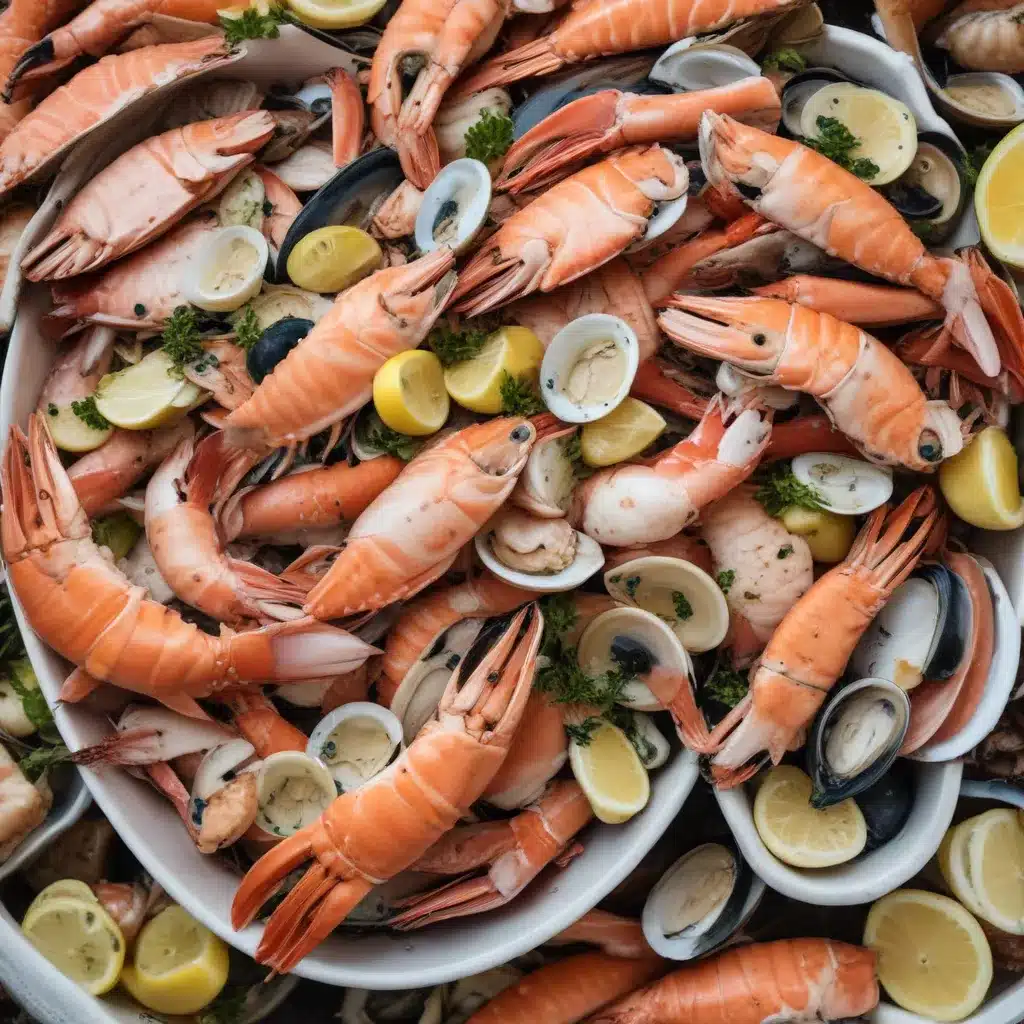
The world’s oceans and waterways are undergoing unprecedented changes due to the impacts of climate change, presenting new and complex challenges for seafood safety. As global temperatures rise, sea levels fluctuate, and weather patterns become more erratic, the delicate marine ecosystems that support our favorite seafood species are being disrupted in ways that can directly threaten human health and the sustainability of the seafood industry.
Environmental Factors Impacting Seafood
Temperature Shifts
The warming of ocean waters is one of the most significant drivers of change in the world’s marine environments. Rising temperatures can lead to the proliferation of pathogens, toxins, and invasive species that pose risks to seafood consumers. For example, warmer waters have allowed the range of the toxic Vibrio bacteria to expand, increasing the likelihood of seafood-borne illnesses like vibriosis. Simultaneously, warmer conditions can stress or kill off native marine species, disrupting the balance of ecosystems and forcing fish and shellfish to adapt or relocate in search of more favorable habitats.
Ocean Acidification
In addition to warming, the world’s oceans are becoming more acidic as they absorb excess carbon dioxide from the atmosphere. This ocean acidification can have devastating impacts on shellfish like oysters, clams, and mussels, weakening their protective shells and impacting their growth and reproduction. As these foundation species of many marine food webs are affected, the broader ecosystem imbalances can ripple up the chain, jeopardizing the future of commercially and recreationally important seafood.
Pollution and Toxins
Climate change is also exacerbating issues surrounding chemical and biological pollutants that can contaminate seafood. Extreme weather events like floods, droughts, and wildfires can mobilize toxic substances, heavy metals, and harmful algal blooms, flushing them into waterways and concentrating them in seafood. Seafood consumers may then ingest these contaminants, potentially leading to foodborne illnesses, neurological damage, or other health problems.
Impacts on Seafood Species
Shellfish
Bivalve mollusks like oysters, clams, and mussels are particularly vulnerable to the effects of climate change. In addition to the threats of ocean acidification, warming waters can promote the growth of pathogenic bacteria like Vibrio that can accumulate in filter-feeding shellfish. Biotoxins produced by harmful algal blooms can also pose dangers to shellfish consumers, causing illnesses like paralytic shellfish poisoning.
Fish
Many commercially and recreationally important fish species are shifting their geographic ranges in response to warming waters, often moving toward the poles or into deeper waters. This can disrupt traditional fishing patterns and supply chains, making it more difficult for seafood producers to consistently meet consumer demand. Climate change may also exacerbate existing issues like overfishing and habitat degradation, further jeopardizing the long-term sustainability of wild fish populations.
Crustaceans
Crustaceans like lobsters, crabs, and shrimp are also vulnerable to the impacts of climate change. Warming waters and ocean acidification can impair their growth, reproduction, and immune function, while extreme weather events can destroy or degrade their critical habitats. Additionally, the spread of invasive species and pathogens can threaten the health and viability of crustacean populations.
Foodborne Illnesses and Seafood
Bacterial Contamination
Foodborne illnesses associated with seafood consumption, such as those caused by Vibrio, Salmonella, and Listeria bacteria, may become more prevalent as climate change alters the marine environment. Warmer waters and changing precipitation patterns can facilitate the growth and spread of these pathogens, increasing the risk of gastroenteritis, sepsis, and other serious health problems for seafood consumers.
Viral Infections
Certain viral pathogens, including norovirus and hepatitis A, can also be transmitted through the consumption of contaminated seafood. Climate change-driven factors like flooding and water quality degradation can contribute to the introduction and proliferation of these viruses in marine ecosystems, potentially leading to outbreaks of foodborne illness.
Biotoxin Accumulation
The rise of harmful algal blooms driven by warming waters and nutrient pollution can result in the accumulation of potent natural biotoxins in seafood. Consuming seafood contaminated with these toxins can cause a range of debilitating neurological, gastrointestinal, and respiratory symptoms, including paralytic shellfish poisoning, amnesic shellfish poisoning, and ciguatera fish poisoning.
Regulatory Frameworks and Seafood Safety
Governmental agencies, industry organizations, and consumer advocacy groups are working to address the growing challenges of seafood safety in the face of climate change. Robust regulatory frameworks, enhanced monitoring and surveillance programs, and improved traceability and supply chain management are all essential elements of a comprehensive approach to safeguarding the seafood supply.
At the same time, consumer education and awareness-raising about the risks and mitigation strategies related to climate change-driven seafood safety issues are crucial. By understanding the evolving landscape of seafood safety, seafood lovers can make informed choices, support sustainable seafood production, and help build resilience within the industry.
Sustainable Seafood Production
Adapting to the threats posed by climate change will require a multifaceted approach to seafood production and distribution. Aquaculture practices that prioritize biosecurity, water quality management, and the cultivation of resilient species can help mitigate some of the risks. Similarly, improved wild fisheries management strategies, such as catch limits, habitat restoration, and bycatch reduction, can bolster the long-term sustainability of marine ecosystems.
Efforts to enhance seafood traceability and certification programs that verify the safety and sustainability of seafood products are also essential. By empowering consumers to make informed choices, these initiatives can incentivize the seafood industry to adopt more climate-resilient practices and protect public health.
As the impacts of climate change continue to unfold, the need for vigilance, collaboration, and innovation within the seafood industry has never been more critical. By staying attuned to the evolving threats and proactively implementing robust safety measures, we can ensure that seafood remains a safe, nutritious, and sustainable part of our diets for generations to come.

